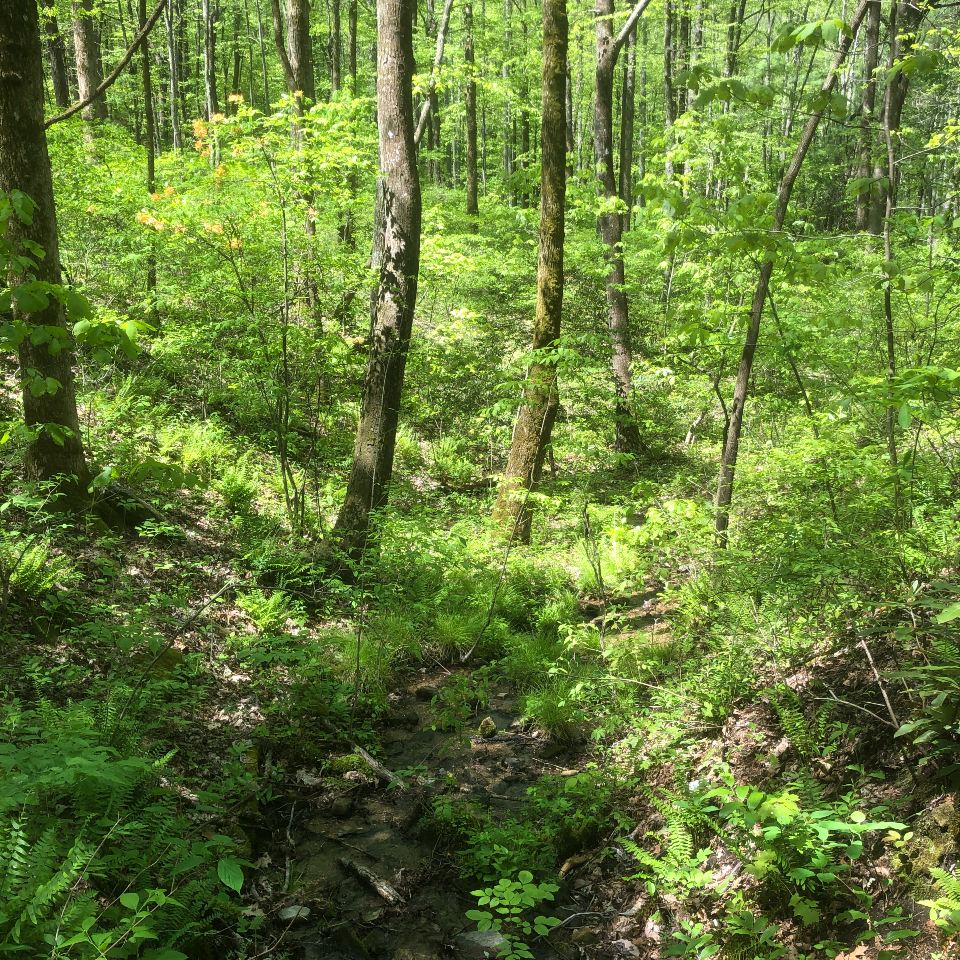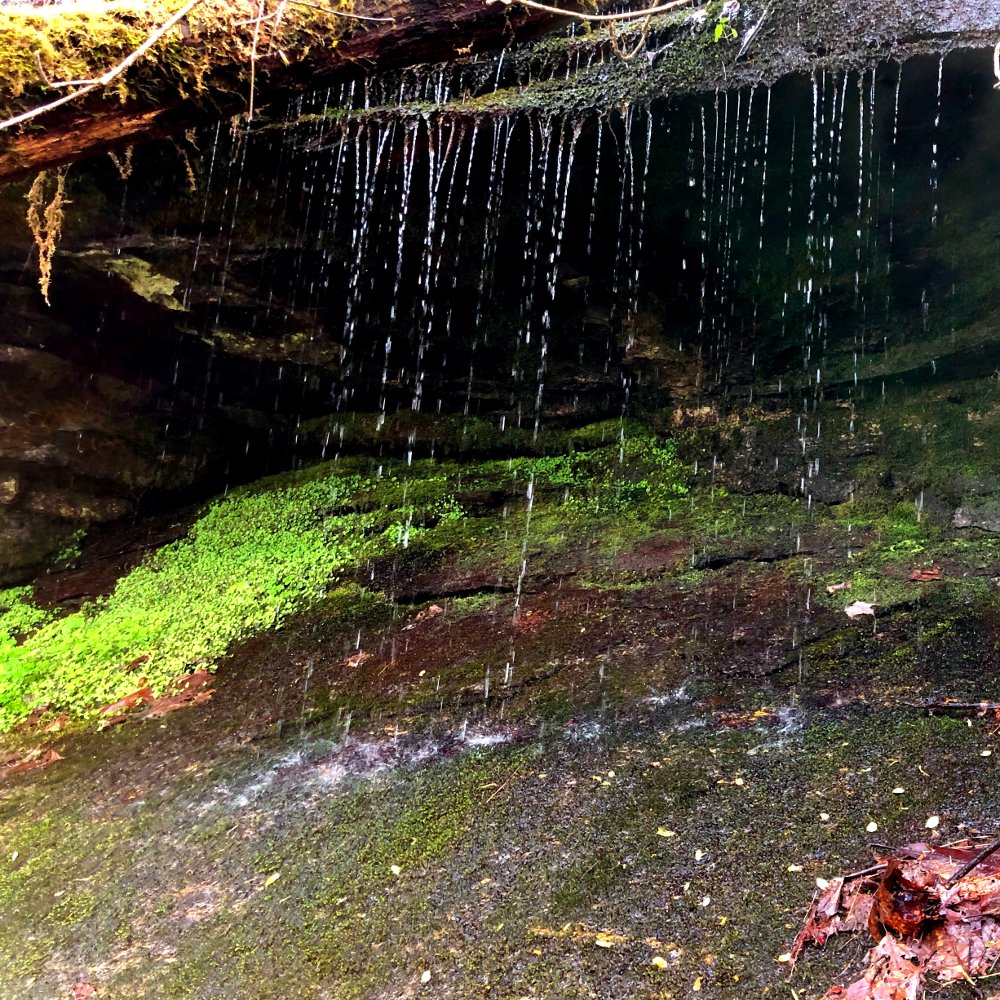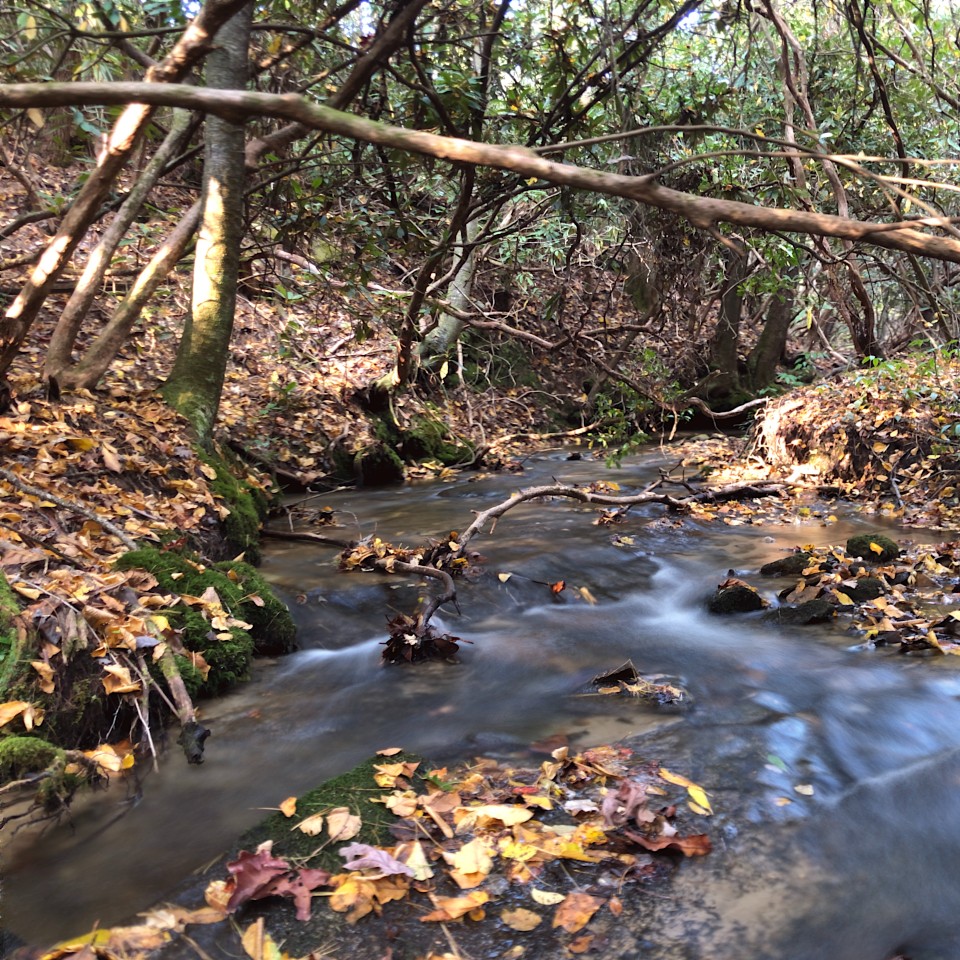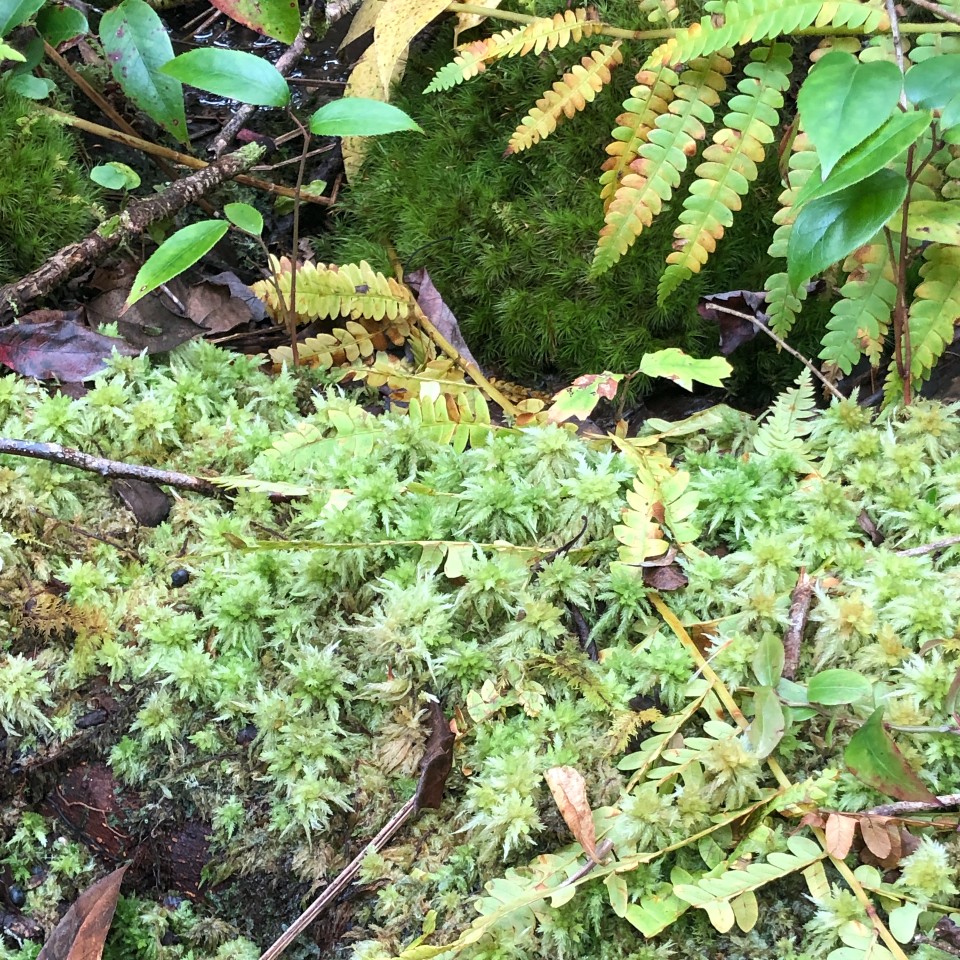A Haven for Rare Plants and Animals
Family protects 361 Acres on Jeter Mountain

Decades ago, Richard Polchow and his two siblings bought some mountain land in Henderson County in order to protect it—but it wasn’t until recently, as he was walking in those woods with an expert biologist that he learned what they really had. The old growth trees hidden away on steep slopes. The endangered wildflowers. The rare mosses, salamanders, bats, and aquatic insects. A crayfish that could be new to science. Mosses with only a few known occurrences.
Even as a boy, he knew this land, called The Folly, was special. He says, “I recognized back in the 60s what a unique place it was because it adjoined our property. I took the opportunity to wander through it and see how pretty it was.”
In the 1980s, the siblings—Richard Polchow, Elizabeth Livingston, and one other sibling—were able to purchase this forested land on Jeter Mountain, north of DuPont State Recreational Forest. Polchow says, “The whole idea was to conserve what was there—the trees and the waterways and everything else that went with it.”

They were following the example of their parents—Robert (Bob) and Mary Polchow—who had purchased large parcels of land in Transylvania and Henderson Counties in order to conserve them.
In December, the siblings donated a conservation easement on 361 acres to Conserving Carolina, forever protecting The Folly’s extraordinary natural resources. It was their second major conservation project in three years, following the protection of 694 acres next to Pisgah National Forest in Transylvania County in 2021.

Conserving Carolina’s Land Protection Director, Tom Fanslow, says, “It’s a rare thing for one family to protect not only so much land, but land with so much value for wildlife and water quality. We are deeply grateful for the Polchow family’s commitment to conservation across multiple generations.”
The newly protected land includes much of the headwaters of Folly Creek. Its abundant water sources include springs, seeps, and 6.6 miles of headwater streams. It is nearly 100% forested, providing clean water that flows into Folly Creek, then Little Willow Creek, and from there the French Broad River.

Fanslow notes that with this project Little Willow Creek is now protected in part of its headwaters as well as at its mouth, where Conserving Carolina recently restored the creek as part of the Pleasant Grove natural floodplain restoration.
As the Polchow family worked toward protecting The Folly, they hired biologist Lloyd Raleigh with Helia Environmental to survey plant and animal life, building on earlier research by Owen Carson with Equinox Environmental. “Lloyd opened up a lot of knowledge and information about what this tract really had besides its natural beauty,” Polchow says. “I went on five or six walks with him and we found some cool things that I didn’t know existed.”

They made their way up steep slopes and found remaining stands of old-growth trees. They explored rock outcrops and seeps, and discovered a wealth of biodiversity. Ultimately, Raleigh listed 694 species of plants and animals found in or near The Folly. On The Folly tract, he found 10 kinds of rare animals, including a salamander, two bats, one bird, and six aquatic insects. He also documented a burrowing crayfish that is potentially new to science, due to crayfish’s tendency to develop into different species in different watersheds. Raleigh also documented 24 rare plants. These include one of the largest existing populations of French Broad heartleaf, as well as a federally endangered wildflower.
Raleigh says, “Jeter Mountain shows us that outstanding natural areas aren’t just the Linville Gorges, Smoky Mountains, and Grandfather Mountains of the area.”
As part of the survey, botanist Becky Smucker helped to identify bryophytes—that is, mosses and liverworts—with less than five known occurrences in the state. Meanwhile, biologist Matthew Green identified rare aquatic insects, including nine new records for Henderson County.

Polchow says, “I think this property has some real benefits to species survival, not only in Henderson County but in the whole region. There are species here that are threatened and it’s very important that we protect them.”
The Folly may also be a strategic location for species that need to migrate or shift their range due to climate change. Polchow sees The Folly as a potential stepping stone for plants and animals moving between two vast conservation areas. To the south, there is the swath of protected lands along the Blue Ridge Escarpment, extending into DuPont, and to the north, there is Pisgah National Forest.
By donating a conservation easement to Conserving Carolina, the family ensured that it will remain a place for wild things, including rare and surprising ones. Although this land remains their private property, they have permanently given up its development rights—a restriction that will also apply to future owners. While many conservation easements do allow carefully managed logging, the Polchow family went further, by giving up the right to harvest timber. For its part, Conserving Carolina has taken on the responsibility to ensure that these conservation protections are upheld over time.
Now, The Folly is a protected haven for everything from warblers to wildflowers, ferns to frogs, and bears to bats. As Polchow says, “It’s good to keep it wild.”
